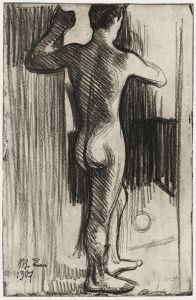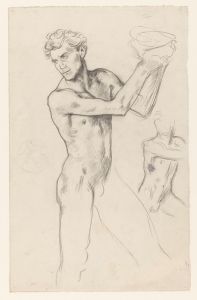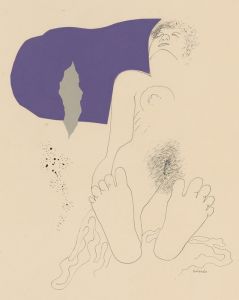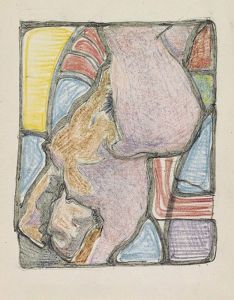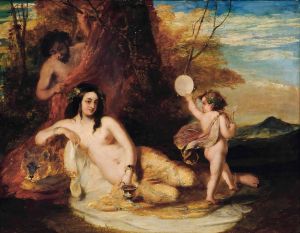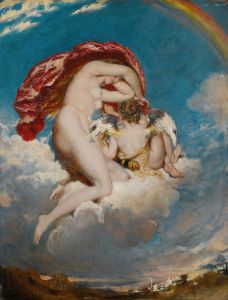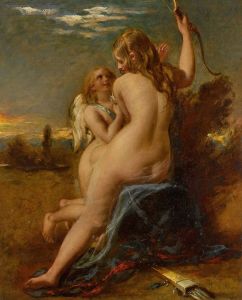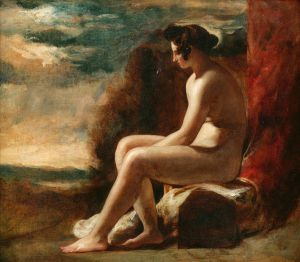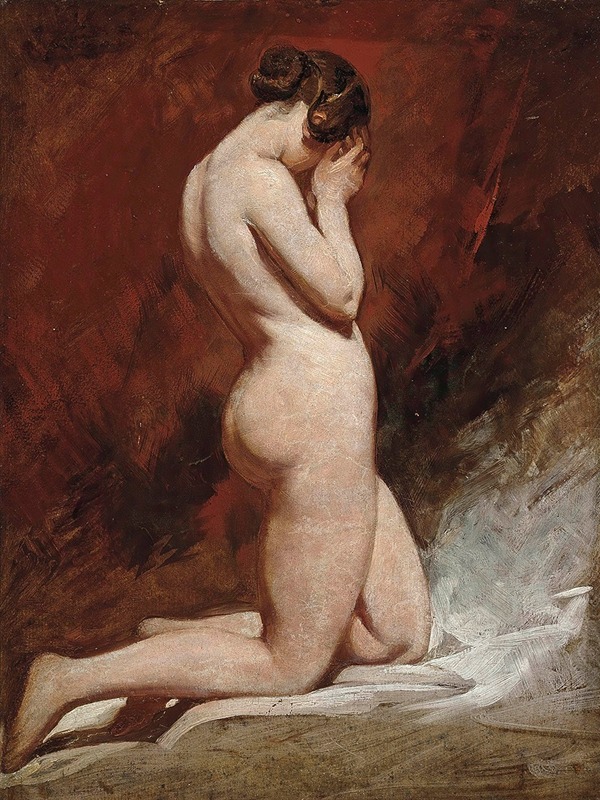
Kneeling nude
A hand-painted replica of William Etty’s masterpiece Kneeling nude, meticulously crafted by professional artists to capture the true essence of the original. Each piece is created with museum-quality canvas and rare mineral pigments, carefully painted by experienced artists with delicate brushstrokes and rich, layered colors to perfectly recreate the texture of the original artwork. Unlike machine-printed reproductions, this hand-painted version brings the painting to life, infused with the artist’s emotions and skill in every stroke. Whether for personal collection or home decoration, it instantly elevates the artistic atmosphere of any space.
William Etty (1787–1849) was a renowned English artist known for his depictions of the human form, particularly nudes, which were often inspired by classical themes and mythology. One of his works, "Kneeling Nude," exemplifies his skill in rendering the human body with a focus on naturalism and sensuality. Etty's approach to painting nudes was both celebrated and controversial during his lifetime, as it challenged the conservative norms of early 19th-century British art.
"Kneeling Nude" showcases Etty's mastery of color and form, capturing the delicate interplay of light and shadow on the human skin. His technique involved the use of rich, vibrant colors, which brought a lifelike quality to his subjects. Etty was influenced by the works of the Old Masters, particularly the Venetian painters such as Titian and Rubens, whose use of color and composition left a significant impact on his style.
Etty's education at the Royal Academy of Arts in London played a crucial role in his development as an artist. He was admitted to the Academy in 1807 and studied under the tutelage of Thomas Lawrence, a prominent portrait painter of the time. Etty's dedication to mastering the human form was evident in his frequent visits to life drawing classes, where he honed his skills in anatomy and figure drawing.
Despite his technical prowess, Etty's focus on the nude form often attracted criticism from the Victorian public and art critics, who deemed his works as indecent or morally questionable. However, Etty defended his art by emphasizing the classical tradition of celebrating the beauty of the human body, a practice that dated back to ancient Greece and Rome.
"Kneeling Nude" is part of Etty's broader body of work that includes historical and mythological subjects. His paintings often depicted scenes from literature and history, populated by figures in various states of undress. This thematic choice was consistent with the Romantic movement of the time, which sought to evoke emotion and explore themes of beauty, heroism, and the sublime.
Etty's legacy as an artist is marked by his contribution to the acceptance and appreciation of the nude in British art. His works are housed in several major collections, including the Tate Britain and the York Art Gallery, which holds the largest collection of his paintings. "Kneeling Nude," like many of Etty's works, continues to be studied for its artistic merit and its role in the evolution of 19th-century British art.
In summary, "Kneeling Nude" by William Etty is a testament to the artist's skill in portraying the human form with sensitivity and realism. Despite facing criticism during his lifetime, Etty's dedication to his craft and his influence on the depiction of the nude in art remain significant aspects of his enduring legacy.





